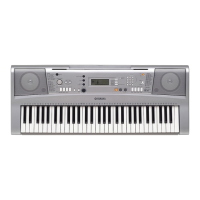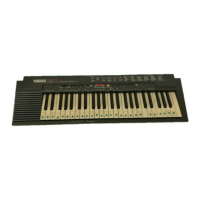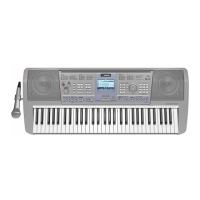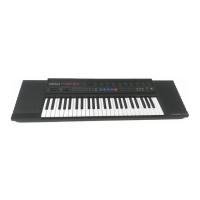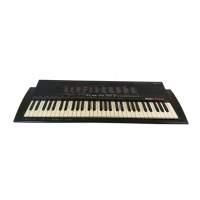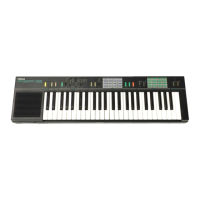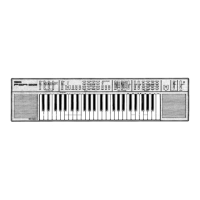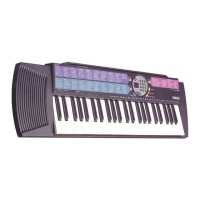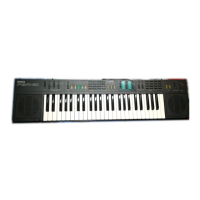Do you have a question about the Yamaha Portatone PSR-E403 and is the answer not in the manual?
Adjust sound characteristics using knobs for effects, filter, and envelope generator. Create new sounds in real time.
Play along with songs and sound like a professional, even with mistakes. Ensures correct notes and timing.
Utilize auto-accompaniment styles to play with a full backing band. Select styles to match music or expand horizons.
Details on using the AC power adaptor or batteries for instrument operation.
Instructions for connecting the instrument to a computer via USB for data transfer.
Overview of the controls and buttons located on the front panel of the instrument.
Overview of the connectors and terminals located on the rear panel of the instrument.
Learn to create arpeggios by playing notes on the keyboard for various musical patterns.
Instructions on how to record and save up to five of your own performances as user songs.
Explanation of basic instrument control operations and the function of display items.
Information on applying various effects like Harmony, Reverb, and Chorus to enhance sound.
Details on features like Metronome, Tap Start, Touch Response, Pitch Bend, and One Touch Setting.
How to use styles, pattern variations, split points, and chord progressions for accompaniment.
Adjusting song volume, setting A-B repeat points, and changing melody voices.
Save and recall panel settings using the Registration Memory feature.
Accessing and adjusting detailed instrument parameters like tuning, split point, and effects.
Information on MIDI, connecting to a PC, data transfer, and remote control functions.
Instructions for installing software, drivers, and using the CD-ROM contents.
Contains troubleshooting information and lists for various instrument features.
Adjust sound characteristics using knobs for effects, filter, and envelope generator. Create new sounds in real time.
Play along with songs and sound like a professional, even with mistakes. Ensures correct notes and timing.
Utilize auto-accompaniment styles to play with a full backing band. Select styles to match music or expand horizons.
Details on using the AC power adaptor or batteries for instrument operation.
Instructions for connecting the instrument to a computer via USB for data transfer.
Overview of the controls and buttons located on the front panel of the instrument.
Overview of the connectors and terminals located on the rear panel of the instrument.
Learn to create arpeggios by playing notes on the keyboard for various musical patterns.
Instructions on how to record and save up to five of your own performances as user songs.
Explanation of basic instrument control operations and the function of display items.
Information on applying various effects like Harmony, Reverb, and Chorus to enhance sound.
Details on features like Metronome, Tap Start, Touch Response, Pitch Bend, and One Touch Setting.
How to use styles, pattern variations, split points, and chord progressions for accompaniment.
Adjusting song volume, setting A-B repeat points, and changing melody voices.
Save and recall panel settings using the Registration Memory feature.
Accessing and adjusting detailed instrument parameters like tuning, split point, and effects.
Information on MIDI, connecting to a PC, data transfer, and remote control functions.
Instructions for installing software, drivers, and using the CD-ROM contents.
Contains troubleshooting information and lists for various instrument features.
| Number of Keys | 61 |
|---|---|
| Touch Response | Yes |
| Styles | 155 |
| Display | LCD |
| Speakers | 12 cm x 2 |
| Amplifiers | 2.5 W + 2.5 W |
| Polyphony | 32 |
| Voices | 504 |
| Songs | 30 |
| Effects | Reverb, Chorus |
| Sequencer | 2 tracks |
| Connectivity | USB to Host |
| Power Supply | PA-3C/PA-130 or 6 x AA batteries |
| Dimensions | 946 x 402 x 130 mm |
| Weight | 7.0 kg |
